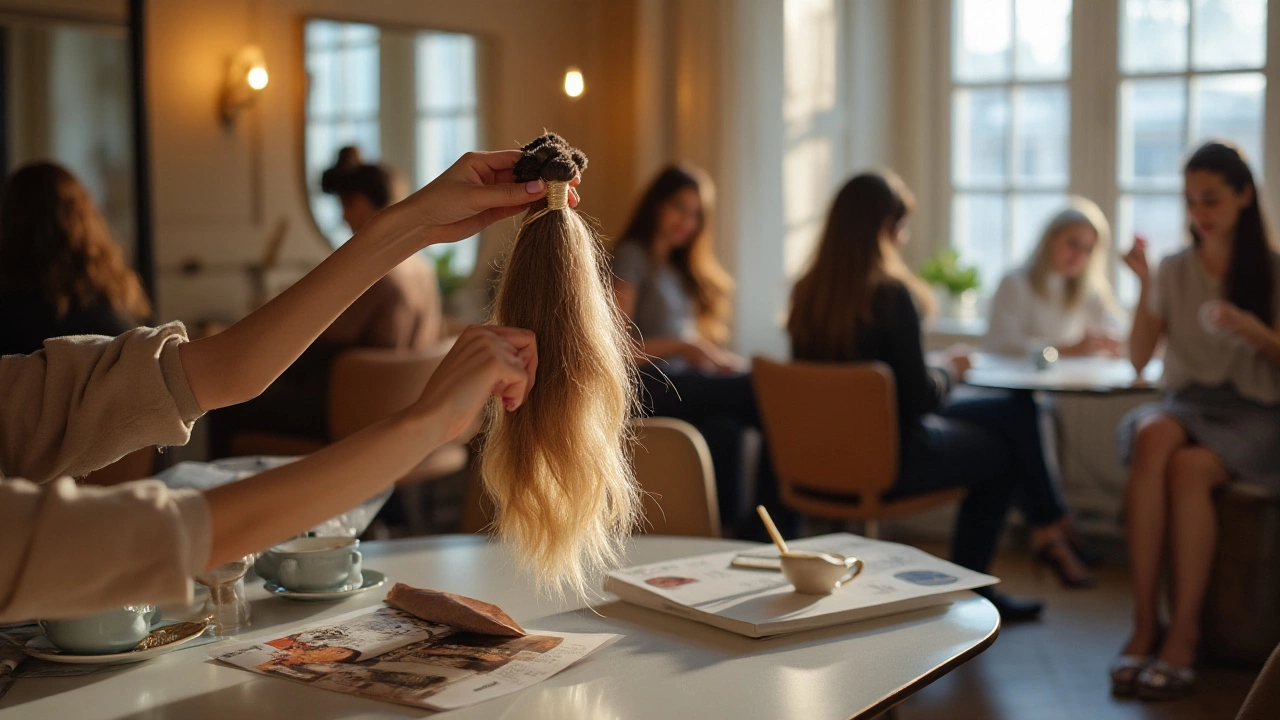Human Hair: Simple Tips, Trends, and Care
If you’re scrolling through beauty blogs, you’ve probably seen the term “human hair” tossed around a lot. It can mean everything from extensions to wigs, and it often confuses people who just want healthy, good‑looking locks. In this guide we’ll cut through the jargon, give you easy‑to‑follow care tips, and share a few style ideas you can try right now.
Hair Care Basics for Real Human Hair
First things first – treat human hair like you would treat your own scalp hair. That means regular washing, conditioning, and gentle handling. Use a sulfate‑free shampoo to avoid stripping natural oils, then follow up with a lightweight conditioner that focuses on the mid‑lengths and ends. If you have human hair extensions, keep the roots clean but avoid heavy products near the bonds; they can cause slipping.
When it comes to drying, air‑dry is best if you have time. If you need a blow‑dry, set the dryer on a low‑heat setting and keep it moving to prevent heat damage. A heat protectant spray is a cheap insurance policy that works for both natural hair and extensions.
Brushing is another area where many make mistakes. Use a wide‑tooth comb on wet hair, starting at the ends and working your way up. This reduces breakage and keeps the cuticles smooth. For extensions, a brush with soft bristles works best – it detangles without pulling the knots out of the track.
Styling, Extensions, and Salon Etiquette
Human hair extensions are a game‑changer if you want length or volume without waiting months for growth. Clip‑ins are the most beginner‑friendly; they come off easily and cause no long‑term commitment. Tape‑ins and sew‑ins last longer but need professional installation. Whichever type you choose, ask the stylist to match the texture and colour as closely as possible – a mismatch looks cheap and can damage your own hair.
When you’re at the salon, there are a few etiquette tips that make the experience smoother for everyone. First, be clear about what you want – bring photos if you can. Second, respect the stylist’s time; arrive on time and be ready for the consultation. If you’re tipping, a 10‑15% tip is standard in the UK, even if the stylist owns the salon. It shows appreciation without feeling awkward.
Short hair doesn’t automatically make you look younger, but the right cut can highlight your best features. Ask your stylist for a style that works with your face shape – a bob can soften a square jaw, while layered pixie cuts add volume to fine hair. Pair a fresh cut with a simple daily routine: gentle shampoo, light conditioner, and a leave‑in spray for shine.
Finally, keep an eye on product ingredients. Look for non‑toxic, cruelty‑free options that list natural oils (like argan or jojoba) and avoid heavy silicones if you have fine hair. Switching to a cleaner product line can improve texture and reduce scalp irritation, whether you’re using real human hair extensions or your own strands.
Whether you’re new to human hair extensions or just want better daily care, the key is consistency. Wash, condition, protect from heat, and choose the right styling tools. With the right habits, you’ll keep your hair looking healthy, vibrant, and ready for any trend that pops up.
The Truth Behind 100% Human Hair Products
Have you ever wondered what '100% human hair' really means on your hair products? This insightful article delves into the truth behind the label, exploring the sourcing, manufacturing, and ethical considerations. Discover tips for choosing the best quality human hair products for your needs, learn about the importance of proper maintenance, and become informed about the industry’s hidden challenges. Equip yourself with the knowledge to make smart hair care decisions and enhance your beauty regimen.
